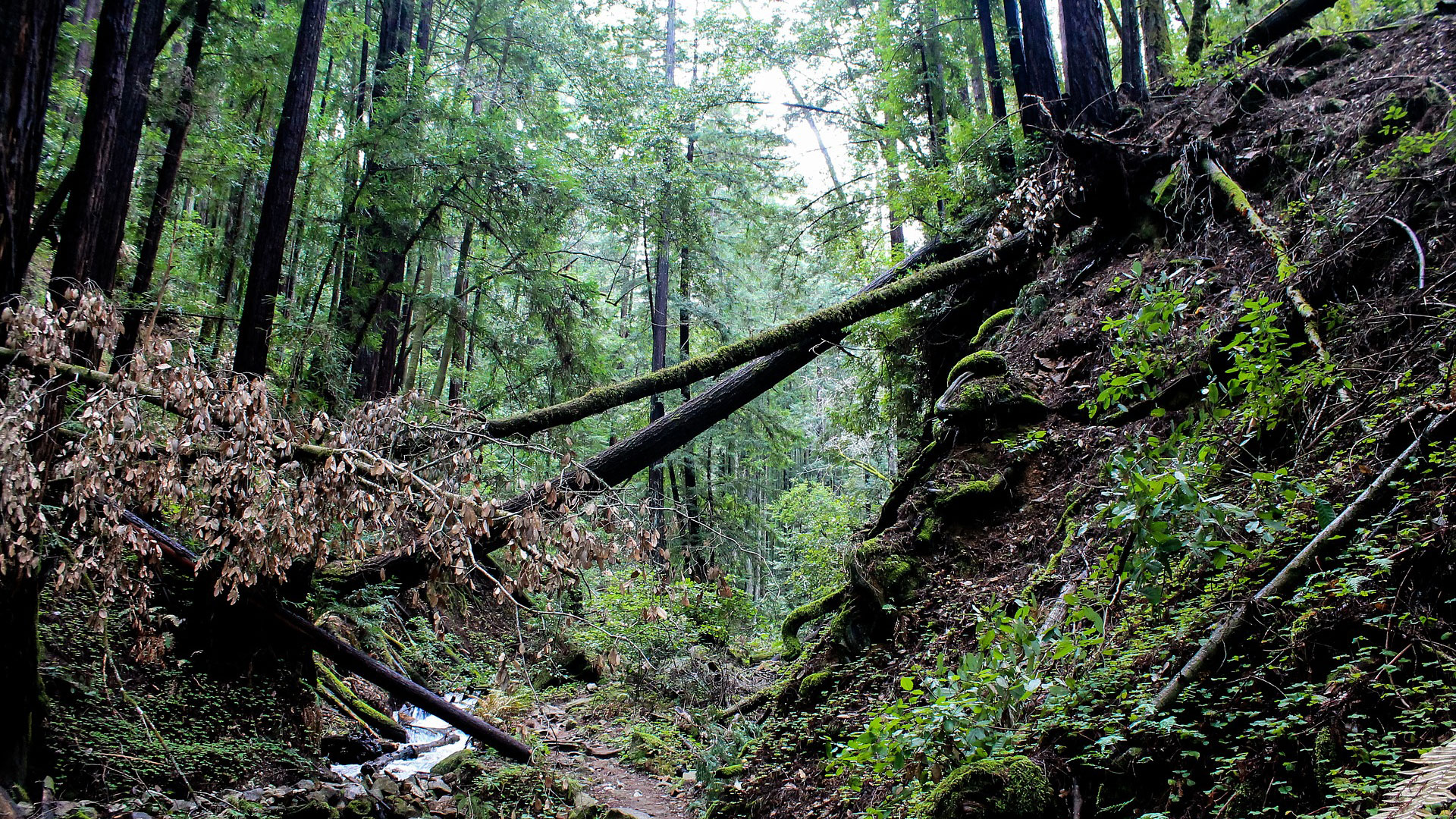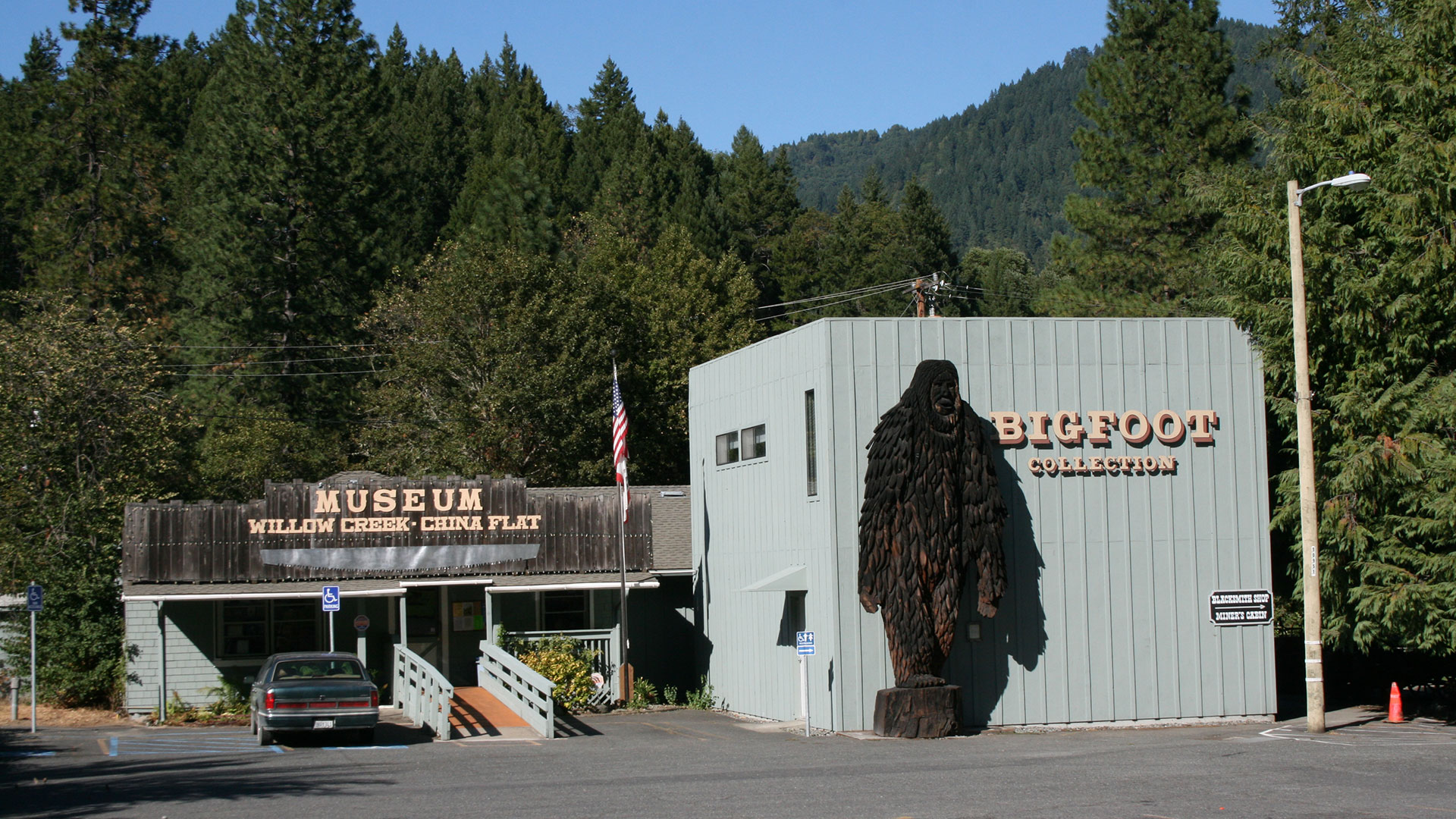LOCATION: Humboldt County, California (also possibly anywhere)
LOWE-CATION A Visit To 'Bigfoot Country'

An ancient forest in California. Could this be Bigfoot's home?
BACKSTORY: While legends of a super-sized creature roaming the California woods go back centuries—even millennia—the contemporary image and idea of Bigfoot emerged in October 1958. Here's a brief timeline of key events between then and now.
- October 1958: In an article for the Humboldt Times, reporter Andrew Genzoli interviewed members of a road construction crew, including a man named Ray Wallace, who all said they had spotted huge tracks that seemed undeniably real. This was the first time the word "Bigfoot" was used.
- October 1967: A short film now known as the "Patterson-Gimlin" film (named for the two men who captured the footage), is released. Many believe this movie, which runs less than a minute, is evidence of Bigfoot's existence. It introduced the world to a creature that came to be known as, simply, Patty.
- 2002: Ray Wallace died in November of 2002. Within a few months, members of his family came forward, stating that the tracks reported in 1958—and the story that coined the term Bigfoot—had been a hoax. Some people don't believe the hoax explanation. Others believe the tracks were a hoax, but continue to believe Bigfoot is out there.
- Today: Theories and explanations of the "Patterson-Gimlin" film also being a hoax are common. In recent years, Bob Heironimus, who was reportedly present at the time the footage was taken, has gone on record stating that the video actually shows him, in a suit, and that he finally came forward because he never got paid. Many, though, question the credibility of Heironimus and the motivation for his declaration, so the debate on the authenticity of the film continues.
A BELIEVER'S PERSPECTIVE: Richard Stenger, who works for the Eureka Humboldt Visitors Bureau, is a Bigfoot believer and the now-infamous film was an influencing factor for him. "This is actually what made me most receptive to the idea," he says. "There have been a number of hoaxes, for sure, but in contrast to the handful of known hoaxes, there have been many more credible sightings insofar as people have said, ‘Yes, we believe this is true; yes, this happened to us; yes, we experienced this.' The 'Patterson-Gimlin' [film] is one of them." He goes on to say, "I have met and know several people who I consider to be normal, sane and credible, who have no reason to want to promote the idea of Bigfoot but who have [said] that they have had experiences."

Roger Patterson comparing his foot with a plaster cast of a footprint by the purported "Bigfoot" or "Sasquatch," which Mr. Patterson said he sighted in a California forest in 1967. (Photo: Alamy)
WHAT'S IN A NAME?: Before the famed 1958 article, Bigfoot was generally referred to as Sasquatch and has also been called a wood ape. These days, while the names are sometimes used interchangeably—and also sometimes exchanged for Yeti, although this is more commonly associated with a similar creature in the Himalayas—Bigfoot is the most commonly used term for the creature that may or may not roam the Pacific Northwest.
HOOPA CONNECTION: The Hoopa Indian Reservation, in Humboldt County's Hoopa Valley, is home to countless reports of sightings. Although he has not had an encounter of his own, Ryan Jackson, the chairman of the Hoopa Indian Reservation Tribal Council, is a believer. "[Bigfoot is considered] kind of like the keeper of the forest: the big guy out here," he says. "For a lot of us here in Hoopa, culturally and traditionally, he is a part of what we do."
Jackson says that Bigfoot is not a constant topic of conversation among the Hoopa, "unless somebody actually has a unique story that they want to share." And while he doesn't actively look for the creature, he says, "If you happen to encounter him, or her, or it, you are lucky to have done that."

The Bigfoot Museum in Willow Creek, California. (Photo: Bob Doran)
LEARN MORE: Libraries and bookstores, including Bigfoot Books, in Willow Creek, have no shortage of Bigfoot reference materials, and a few go-to books in the region include The Hoopa Project: Bigfoot Encounters in California and Tribal Bigfoot, both written by David Paulides and illustrated by Harvey Pratt; Bigfoot! The True Story of Apes in America, by Loren Coleman; and Sasquatch: Legend Meets Science, by Jeff Meldrum. You can also follow any of a number of Bigfoot-related organizations, including the Bigfoot Field Researchers Organization. Also, the Willow Creek-China Flat Museum is a proud part of Bigfoot Country, and home to a well-known Bigfoot exhibit, which includes, among other things, several footprint casts.
SEE FOR YOURSELF: While many believers don't actually venture deep into the woods of Humboldt County in the middle of the night to search for Bigfoot themselves, locals say you're welcome to have a look. But if you do, please be respectful of the land and the people who live there. Jackson says, "Folks here in Hoopa are really protective of what we do have left, but for the most part are always open. A lot of people take pride in that—that it is Bigfoot Country."
See Rob, Matthew and John Owen pursue the 'squatch. Watch the full episode now!
